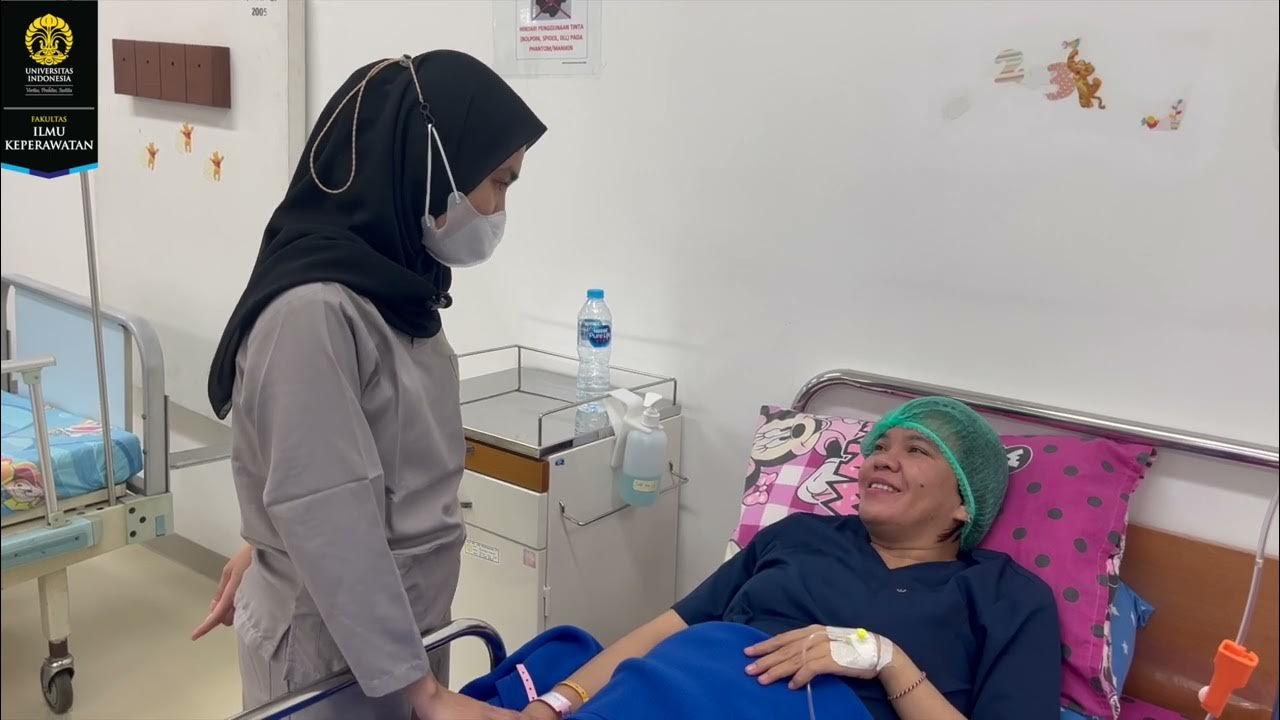Intravenous (IV) cannulation | OSCE Guide | UKMLA | CPSA
Summary
TLDRIn this medical procedure script, Andrew, a medical student, introduces himself and confirms patient James' personal details. He explains the purpose of inserting a cannula, a small tube for administering fluids and medications, and seeks James' consent. Andrew checks for allergies, prepares the equipment, and performs the procedure, ensuring James' comfort throughout. The successful insertion and flushing of the cannula are followed by a check on James' well-being, concluding with a polite exchange of thanks.
Takeaways
- 😀 Introduction: Andrew, a medical student, greets James and requests confirmation of his name and date of birth.
- 📝 Personal Information: James confirms his name and birth date as December 13, 1989.
- 💉 Procedure Explanation: Andrew explains the purpose of inserting a cannula, which is to administer fluids and medications.
- 🔍 Consent: James gives his consent for the procedure, acknowledging it might be uncomfortable but not painful.
- 🚨 Allergy Check: Andrew inquires about any allergies, to which James responds negatively.
- 🧼 Preparation: Andrew prepares to gather equipment before beginning the procedure.
- 🤲 Positioning: James is asked to lift his arm in preparation for the cannula insertion.
- 👀 Initial Insertion: Andrew describes the sensation as a 'sharp scratch' during the insertion of the cannula.
- 🌊 Cannula Flush: Post-insertion, Andrew flushes the cannula to ensure it is functioning correctly and checks for any pain.
- 👌 Completion: The procedure is completed successfully, and James is asked if he is feeling okay.
- 🙏 Final Check: James confirms he is feeling fine, and Andrew thanks him for his cooperation.
Q & A
What is the patient's name mentioned in the script?
-The patient's name is James.
What is the date of birth provided by James in the script?
-James's date of birth is December 13, 1989.
What procedure is Andrew, the medical student, going to perform on James?
-Andrew is going to insert a cannula into James's arm.
What is the purpose of inserting a cannula according to the script?
-The cannula is a small plastic tube that allows the medical team to give fluids and medications to the patient.
Is the procedure expected to be painful according to the script?
-The procedure might be a bit uncomfortable, but it is not expected to be painful.
Does James give his consent for the procedure in the script?
-Yes, James confirms that it is okay to proceed with the procedure.
Is James allergic to anything according to the script?
-No, James states that he is not allergic to anything.
What does Andrew do before starting the procedure?
-Andrew gathers his equipment before beginning the procedure.
What does Andrew do after inserting the cannula?
-Andrew flushes the cannula to ensure it is working properly.
Does James experience any pain during the procedure?
-The script does not mention any pain experienced by James during the procedure.
How does James feel after the procedure is completed?
-James feels okay after the procedure is completed.
Outlines

هذا القسم متوفر فقط للمشتركين. يرجى الترقية للوصول إلى هذه الميزة.
قم بالترقية الآنMindmap

هذا القسم متوفر فقط للمشتركين. يرجى الترقية للوصول إلى هذه الميزة.
قم بالترقية الآنKeywords

هذا القسم متوفر فقط للمشتركين. يرجى الترقية للوصول إلى هذه الميزة.
قم بالترقية الآنHighlights

هذا القسم متوفر فقط للمشتركين. يرجى الترقية للوصول إلى هذه الميزة.
قم بالترقية الآنTranscripts

هذا القسم متوفر فقط للمشتركين. يرجى الترقية للوصول إلى هذه الميزة.
قم بالترقية الآنتصفح المزيد من مقاطع الفيديو ذات الصلة

Respiratory Examination | OSCE Guide (Latest) | UKMLA | CPSA

Peak expiratory flow rate (PEFR) measurement & explanation - OSCE Guide | UKMLA | CPSA

Obtain and Document Patient Information

Edukasi Praktikum SKP 4 _ Kepastian Tepat Lokasi, Tepat Prosedur, dan Tepat Pasien Operasi

[VIDEO SKILL OSCE - PEMASANGAN KATETER URETRA]

Abdominal Examination - OSCE Guide (Latest) | UKMLA | CPSA
5.0 / 5 (0 votes)
